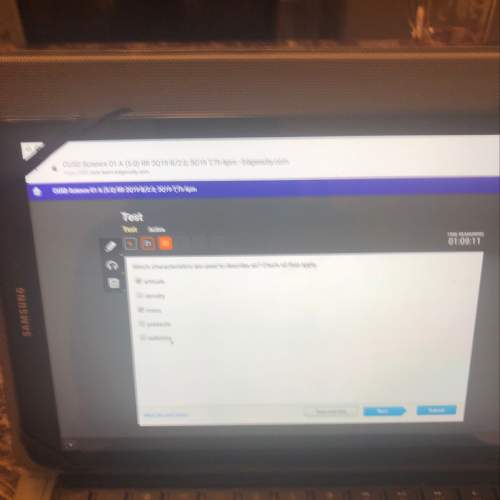
Chemistry, 25.04.2021 22:20 yasameenakbari
For the reaction, A(g) + 2B(g) → 2C(g) + 2D (g)
the following data was collected at constant temperature. Determine the correct rate law for this reaction.
Trial
Initial [A]
Initial [B]
Initial Rate
(mol/L)
(mol/L)
(mol/(L·min))
1
0.125
0.200
7.25
2
0.375
0.200
21.75
3
0.250
0.400
14.50
4
0.375
0.400
21.75
E) Rate = k[A]3
C) Rate = k[A] [B]2
A) Rate = k[A] [B]
D) Rate = k[A]
B) Rate = k[A]2 [B]

Answers: 3


Other questions on the subject: Chemistry


Chemistry, 22.06.2019 21:50, isabel81ie
Given the data below for the reaction, 2 a + 2 b + 4 c => d + e + 3 f, the reaction is fill in the [ ] order in a, fill in the [ ] order in b, fill in the [ ] order in c and fill in the [ ] order overall. (use the words "first, second, third, fourth" to fill each blank)experimentinitial conc of a, mol/l initial conc of b, mol/l initial conc of c, mol/l initial rate, mol/l. s1 0.1 0.1 0.2 2 x 10-32 0.2 0.3 0.2 6 x 10-33 0.3 0.1 0.2 2 x 10-34 0.4 0.3 0.4 1.2 x 10-2
Answers: 2

Chemistry, 22.06.2019 22:30, darceline1574
Vi limitens. vastery test select the correct answer. which statement explains why large atoms are more reactive than small atoms? a. large atoms have valence electrons farther from the nucleus and lose them more readily. b. large atoms have greater ionization energy, which they can utilize during a reaction. c. large atoms have a greater number of electrons that they can lose during a reaction. d. large atoms have more energy levels, so they have more energy to pass on in a reaction. reset next
Answers: 3
You know the right answer?
For the reaction, A(g) + 2B(g) → 2C(g) + 2D (g)
the following data was collected at constant tempe...
Questions in other subjects:

English, 28.06.2019 18:50


Mathematics, 28.06.2019 18:50

Mathematics, 28.06.2019 18:50






Mathematics, 28.06.2019 18:50




